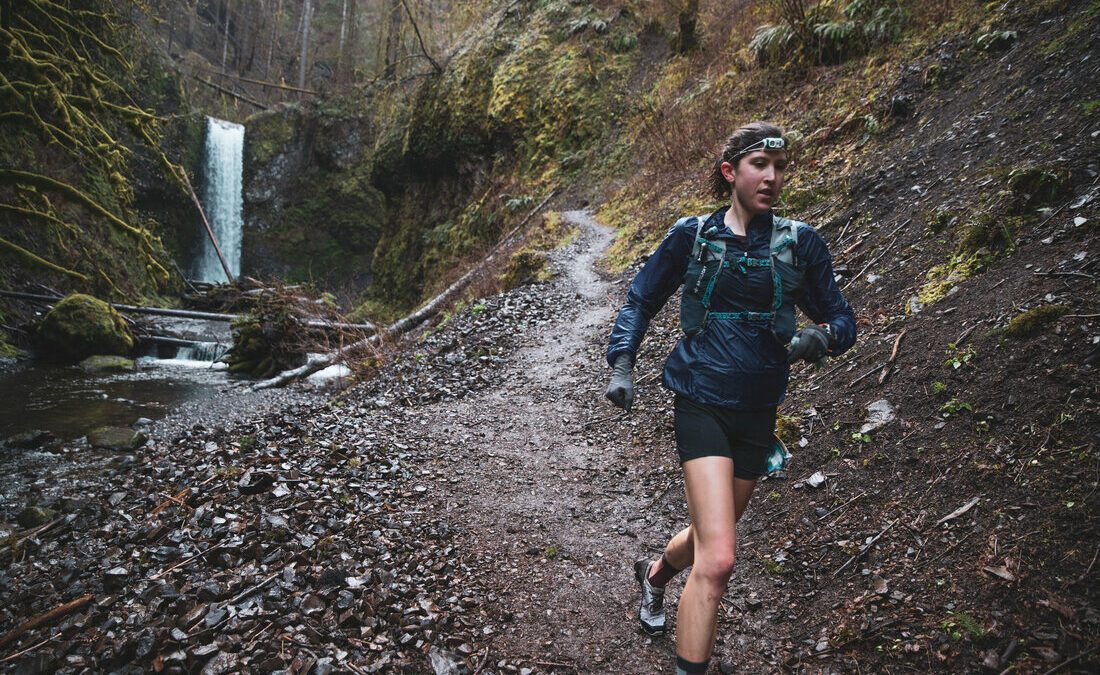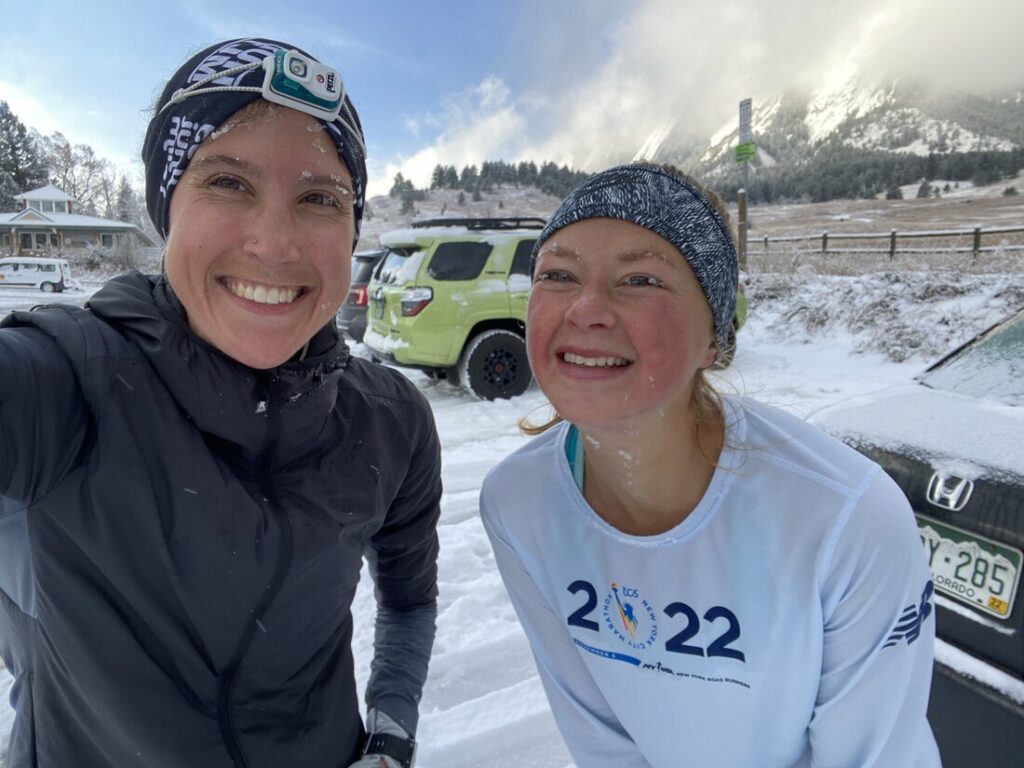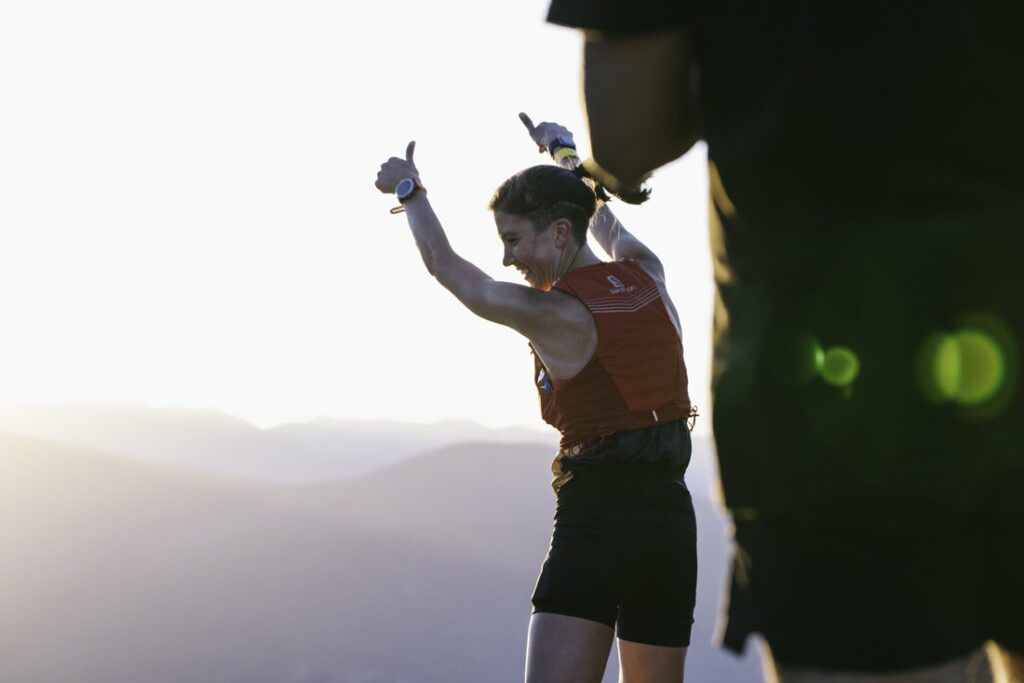Run through the winter like a pro with these tips
Boulder-based ultrarunner Ellie Pell shares her tips on making it through the chilly running months
 Photo by:
courtesy of Ellie Pell
Photo by:
courtesy of Ellie Pell
Unlike many endurance athletes who switch to skiing in the winter months, elite ultrarunner Ellie Pell runs all winter. Her experience running through the cold, dark months has resulted in some wisdom–when it’s coldest out, Pell often fits her running in the early mornings, before sunrise.
Pell was a fan favourite at Western States last year, where she finished 14th among the women (this year she’ll be back to crew her best friend and golden ticket winner Riley Brady). From Ithaca, N.Y., Pell recently relocated to Boulder. “I also have poor circulation in my hands, which can complicate both running enjoyment and opening nutrition packets,” says Pell. Here are a few things she has found to help.
View this post on Instagram
Use gloves with a wind mitt, or gloves under mittens
The friction between the fingers in the gloves increases warmth, and the wind mitt protects the heat from leaving your fingers. If it is especially cold, I put a pair of hand warmers inside the mitt to cling to, but unless you are under 10 degrees (or have Raynaud’s syndrome) the wind mitt is surprisingly good at trapping that heat.
Keep fuel close to the body (for warmth) or drink your nutrition
“There is nothing worse than a frozen gummy or cold gel when it is cold outside,” says Pell. “It also stinks when sports drink freezes in the nozzle or bottle.” Pell solves this issue by keeping her nutrition as close to her body (and heat centre) as possible. She also tries to limit the number of packets she has to open, so she doesn’t waste time struggling to open packaging with cold fingers.

Pell says she favours gummies or chews on really cold days, because she can open them pre-run. “The hardest thing in the winter is drinking cold fluid when it’s cold, she says. “I try to prepare by using warmer water in the morning when I prepare my bottles and keeping them near the heater in my car–every little bit helps.”
On icy roads, experiment with trail shoes/microspikes
“I find the winter is a great time to test out different trail shoes on the icy or snowy roads,” Pell says. “The traction on soft surfaces after a big snowstorm is a better focus for me than trying to maintain a pace.” Pell explains that a good road-to-trail pair of shoes work really well for this, and help a runner get to know the feel underfoot. Later, when things thaw, this training makes it easy to decide whether the shoes would be a good pick for a race day in the mountains.
“Having recently moved to a place that has mountains to run all year, the ice doesn’t stop our training,” she says. Pell carries a nice pair of microspikes in her pocket or pack to use if she hits icy sections.”It sounds a lot more burdensome than it is, and when your luck runs out dancing over the ice, that extra few ounces of gear is worth it,” she says.
View this post on Instagram
Use the tools available for you (no shame in hitting the treadmill or track)
Even if you’re a hardcore all-season trail and mountain runner, the treadmill is worth considering on really cold days. While you’ll certainly gain mental toughness from running in the cold, Pell says sometimes an indoor run may be more beneficial if it’s nasty out, especially if you have speedwork scheduled.

“When it’s under a certain temperature (which varies for everyone), it becomes difficult for muscles and tendons to adequately warm up to assume the turnover needed for effective speedwork,” she says.”Instead of chancing a pulled muscle or tendon, if a treadmill is an option, take it!”
If indoor training is not an option, Pell says winter is a good time to focus on effort over pace.”Tuning in to how your body feels at a certain effort, rather than pace, is very useful for trail runs and races with varied terrain,” she adds.”Keep the effort honest, do your best and get ready to fly, come spring.”


